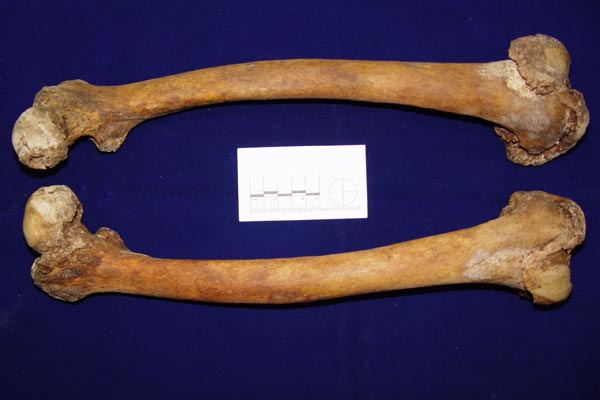Overweight People Really Are Big (Leg) Boned

A skeleton can hold many clues about its deceased flesh-and-blood owner, and now research indicates that bones can show whether or not that person was overweight.
The key to ascertaining this is the thigh bone — a thick, weight-bearing bone called the femur. By studying the remains of 121 white men, two anthropologists have found the overweight men had wider femur bones.
Ann Ross, an anthropologist at North Carolina State University and one of the researchers, described the change in the bone as "almost like a buttress making something stronger."
"A lot of people have the impression that bone is not alive, but it is a very alive tissue, and it is continuously changing, and it changes due to the stressors that are placed on it," Ross said.
Other research has revealed that overweight and obese people move differently than those of normal weight to compensate for the extra heft they are carrying. For example, one study found that obese people took wider steps when walking than people of normal weight. These changes may alter the forces on the femur and cause it to change its shape, according to Ross and fellow researcher Gina Agostini.
They found that overweight men among the 121 skeletons had femurs that were wider from side-to-side. Changes in width from front-to-back of the femur showed no relationship to body weight.
In order to control for sex differences and possible genetic effects on variation in femur width, Ross and Agostini studied only white male skeletons. The next step will be to look at the relationship between femur width and body weight among women and different ethnic populations, Ross said.
Get the world’s most fascinating discoveries delivered straight to your inbox.
The clues investigators can glean from a skeleton include age at death, sex, the presence of certain bone-altering diseases, ethnic ancestry and cause of death. This research could give them another clue with which to work when trying to identify a body, Ross said. However, it would be trickier to apply to ancient populations because their physical activity was much different than ours, she said.
The study was published in the March issue of the Journal of Forensic Sciences.
You can follow LiveScience writer Wynne Parry on Twitter @Wynne_Parry.



